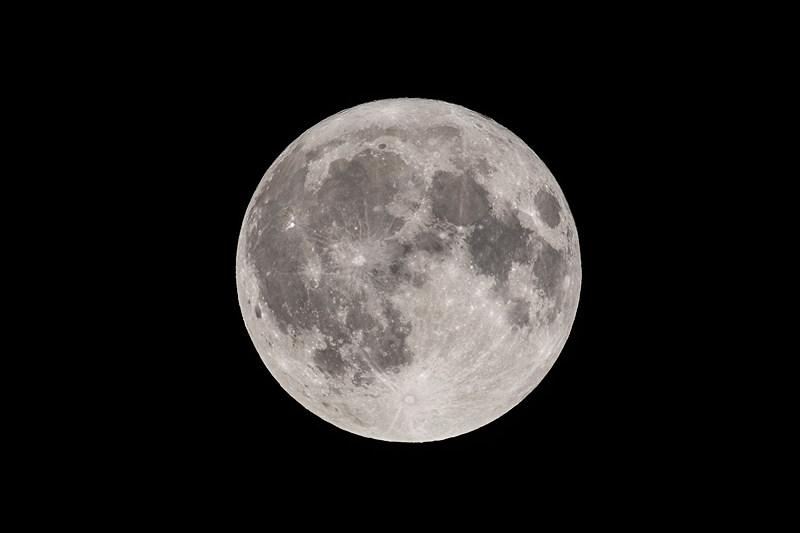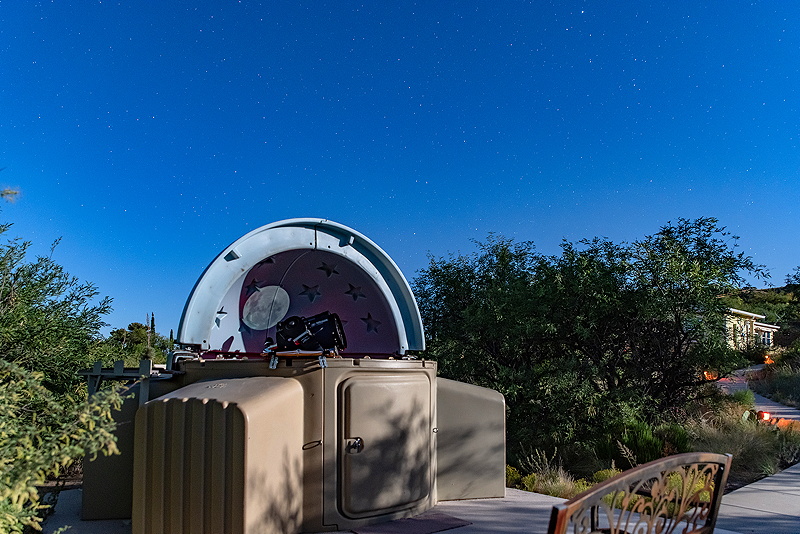Venus Filter Tests, ISS,
"Strawberry" Moon, Full Moon on Dome
Posted: 4 June 2023
|
Open: Saturday, 3 June 2023, 1756 MST Temperature: 84°F |
Session: 1880 Conditions: Clear |
Equipment:
12" f/8 LX600 w/StarLock
2" 24mm UWA eyepiece
1.25" 5.5mm eyepiece
1.25" filters
2" 2X Powermate
Focal reducer
Camera:
D850 DSLR
Venus Greatest Eastern Elongation occurs on 4 June 2023, but with clouds forecast for that night, I decided to try some filter tests this session. These tests are in preparation for my "Ashen Light" observing attempts beginning later this month.
1801 MST: LX600 ON, StarLock OFF, High Precision OFF.
Viewed Venus, 102X and 443X. I then began using my 1.25" filters on the 1.25" 5.5mm eyepiece (443X). Here are the results of my visual tests.
Light Reduction Filter (LPR): Good to reduce the glare from the bright planet. Shading near the terminator was evident.
#82 Light Blue: Very little effect.
#8 Light Yellow: Very little effect.
#56 Light Green: Reduced glare. Some near terminator shading visible.
#21 Orange: Very little effect.
Moon Filter: Reduced glare. Near terminator shading not as evident as with LPR filter.
Hydrogen-Beta: Considerable brightness reduction. Near terminator shading more pronounced.
I then mounted the D850 DSLR at prime focus + 2" 2X Powermate using a 2" to 1.25" adapter (to accept the 1.25" filters). I imaged Venus at various exposures using a White Balance of 4550K. The following images are cropped from the full-frame images, but otherwise are not edited.
No filter (1/400sec, ISO 400)

LPR (1/320sec, ISO 400)

#82 Light Blue (1/320sec, ISO 400)

#8 Light Yellow (1/250sec, ISO 400)

#56 Light Green (1/250sec, ISO 400)

#21 Orange (1/400sec, ISO 400)

Moon Filter (1/250sec, ISO 400)

Hydrogen-Beta (1/320sec, ISO 1600)

1906 MST: Tests ended. I plan to do similar tests on the next session using my 2" filters.
I updated the TLE in the AutoStar for this night's pass of the International Space Station (ISS).
1922-1940 MST: Relaxed on the observatory patio bench while waiting for the ISS pass.
1930 MST: Sunset.
Prepared for the ISS pass. Mounted the D850 DSLR at prime focus + 2X Powermate, focused on Venus, locked the 12" mirror, and checked the alignment of both finderscopes.
1950 MST: All in readiness for the ISS pass to begin at 1955 MST in a bright twilight sky.
I did a 1080p, 60fps video recording at 1/4000sec, ISO 3200 for 6m51s. Here are several images of the ISS taken from individual video frames.

During the ISS pass I saw the first Kissing Bug of the season. It was terminated after the pass ended. Kissing Bug #2 was terminated a few minutes later.
2012 MST: The southeastern sky was beginning to brighten from the rising Full ("Strawberry") Moon. The Moon was still behind the hill to the southeast.
2014 MST: Relaxed on the bench while waiting for the Moon to appear.
2034 MST: The Full Moon was rising over the hill.
2050 MST: Back inside the observatory. Saw Kissing Bug #3 but that one got away.
Viewed the Moon, 102X. No terminator was visible.
Mounted the D850 DSLR at prime focus + focal reducer. Took this image of the Moon (1/500sec, ISO 100).

Mouseover or tap on image to see the "Strawberry" Moon
Next, I prepared to image the Full Moon projected (102X) onto the observatory dome. Mounted the D850 DSLR on a camera tripod outside of the observatory. This image (f/3.5, 10 seconds, ISO 1250, FL 24mm) shows the Moon on Dome, many stars in the sky, including Vega and the constellation of Lyra at the upper right.

Click or tap on image for larger version
Took a final look at the Full Moon, 102X.
2127 MST: LX600 OFF.
|
Close: Saturday, 3 June 2023, 2138 MST Temperature: 70°F |
Session Length: 3h 42m Conditions: Clear |
Comments are welcome using Email. Twitter users can use the button below to tweet this report to their followers. Thanks.
Cassiopeia Observatory Home Page
Copyright ©2023 Michael L. Weasner / mweasner@mac.com. Email Etiquette.
URL = http://www.weasner.com/co/Reports/2023/06/04/index.html
